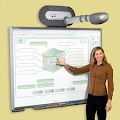Hi
My name is Joe, I used to be a grumpy technophobe who viewed bloggers as geeks with no friends sat in their bedrooms playing on their computers. How things change! I'm a computer convert, a budding blogger and a networking newbie.
In my first ever blog I intend to highlight the issues of E-Safety. I am sure that all of you have had it drummed into you time and time again the importance of being cyber-savvy. Well tough luck because here we go again
Only fools breaks the E-Safety rules:
Teenagers, I am well aware that you think you know
everything about everything. Well i am a London Cabbie, so i really do know everything about everything so sit down, shut up and listen. The world is not full of perverts and peadophiles, however the world does contain a few. These people, no matter how few, are out there and they are looking for you. Don't make it easy for them. Be vigilant, be pro-active, be cyber-savvy. Here are a few simple rules on how to stay safe when using modern technology..
Use a nickname: Do not divulge your true identity to online strangers
Save a copy of online chat: This can help if problems arise
Take care on who to trust: Some people online may not be who they say they are
When teaching E-safety to children in EYFS and Key Stage 1, I would take a more serious approach. Parents need to be aware that access to the internet is a routine part of a child's day and that there are many positives to the online world. However, just as in the outside world, the online world has websites that provide access that is suitable for adults only.
Links to websites with additional information can be found below
CBBC stay safe
Uk Council for child internet safety .







 In addition, they
replace the scenario of a large group crowding around a single
computer.The interactive whiteboard allows a large group to sit and
participate comfortably in a presentation.Futhermore, you
can enhance any presentation or lesson by easily integrating video,
animation, graphics, text and audio with the spoken presentation. Consequently, they enable the children to participate in the lesson in a more hands on way. In a report to the Department of Education, Manchester Metropolitan University concuded " the use of an IWB increases the level of children's engagement with learning activities." (2007)
However, there are some negative aspects to using IWBs in class. In my placement school i am in a reception class, therefore, the children are very small. In order for them to reach the IWB a set of steps have needed to be installed. Furthermore, when the children climb the steps they cast a shadow onto the IWB rendering the screen unreadable.
In addition, they
replace the scenario of a large group crowding around a single
computer.The interactive whiteboard allows a large group to sit and
participate comfortably in a presentation.Futhermore, you
can enhance any presentation or lesson by easily integrating video,
animation, graphics, text and audio with the spoken presentation. Consequently, they enable the children to participate in the lesson in a more hands on way. In a report to the Department of Education, Manchester Metropolitan University concuded " the use of an IWB increases the level of children's engagement with learning activities." (2007)
However, there are some negative aspects to using IWBs in class. In my placement school i am in a reception class, therefore, the children are very small. In order for them to reach the IWB a set of steps have needed to be installed. Furthermore, when the children climb the steps they cast a shadow onto the IWB rendering the screen unreadable.